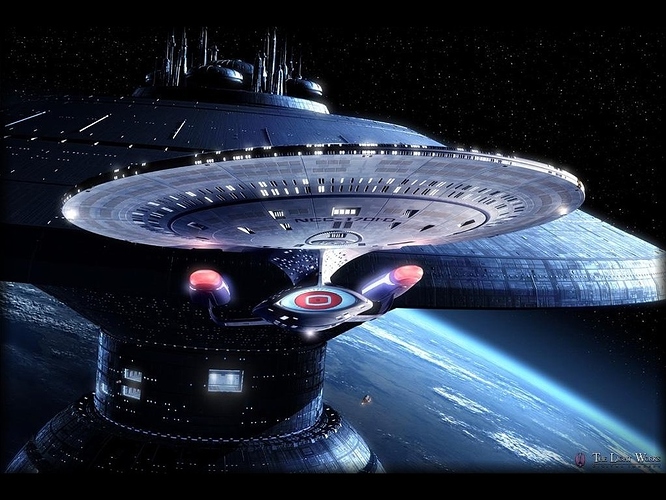Whew! Didn’t think I’d finish this one. Here is my entry for the majestic music contest. As you can see, I did a tribute to Star Trek. This is my own original composition in my own style and not intended to sound like any of the great composers from the Star Trek franchise.
First thanks to @Mikael for giving me a bit of inspiration to do this one, since I was in a bit of a dry spell. Thanks to @Geoffers as well for some advise on some harmony aspects.
This piece is in the key of C major and basically stays that way for the entire piece, but I focused on a lot of C and G based harmony to give it an overall G Mixolydian sound—hopefully I accomplished that. There was no modulation strictly speaking, save for a phrase that suggests G major and some cool sounding chromatic stuff at the end which used D and A to Amin to get back to an authentic cadence of F G7 C. ( in experimenting a bit, I found that a dominant 7 with an added 9 sounds really cool!)
Tempo-wise, I start with a nobilmente at about 90 with a short rallentando going into the 1st theme, l’istesso, and then increase to 100 for the second string theme. for the outro, the tempo slows to a maestoso 70. The time changes through out, but starts 3/4 then 4/4 for the main parts and to 2/4 on the outro.
Instrumentation/Gear:
Traditional orchestral setup: 2 flute, oboe, English horn, 2 Bb clarinet, bassoon, 4 F horns, 2 Bb trumpets, 2 tenor trombone, bass trombone, tuba, timpani, percussion (bass drum, snare, glockenspiel, splash/crash cymbal), celeste, harp, piano, strings.
Written/playback with Dorico Pro 3.5 and NotePerformer
Mastered in Studio One 5
waves J37 tape emulator
Ozone 9

 While I think your tools work well for you for writing, the instrument sounds are a bit midi sounding to me. I’m not familiar with Dorico so much, but you might consider a way to use higher quality sample libraries.
While I think your tools work well for you for writing, the instrument sounds are a bit midi sounding to me. I’m not familiar with Dorico so much, but you might consider a way to use higher quality sample libraries.

